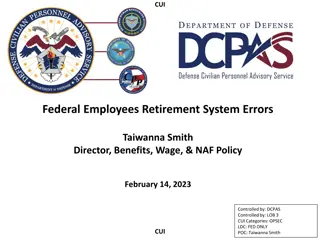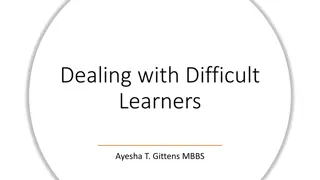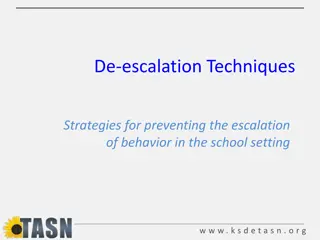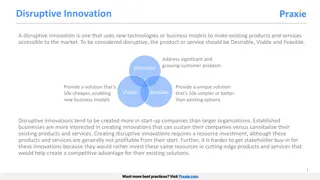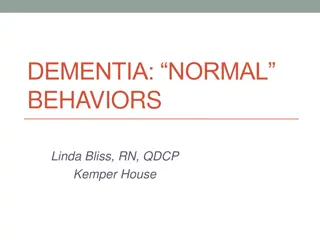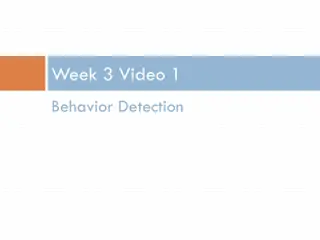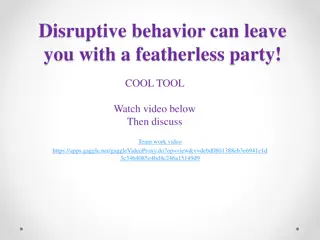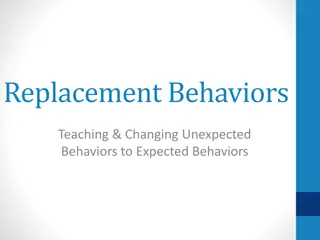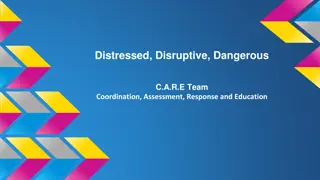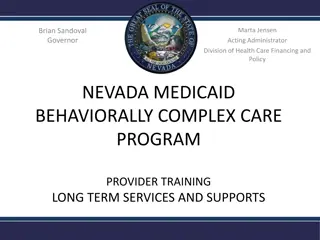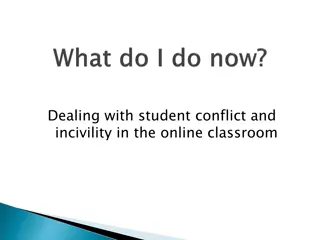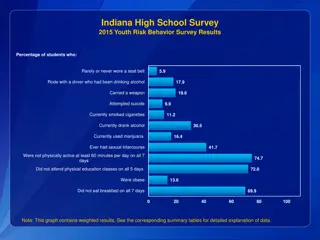Managing Difficult Employees and Disruptive Behaviors
Identify common types of difficult and disruptive employee behaviors, discuss the potential impact on the organization, and offer tips for constructive management in the workplace. Explore behaviors like gossiping, incivility, bullying, insubordination, and arrogance. Understand the metrics and legal issues related to turnover, employee engagement, job satisfaction, productivity, work quality, lost work hours, and legal action.
Download Presentation

Please find below an Image/Link to download the presentation.
The content on the website is provided AS IS for your information and personal use only. It may not be sold, licensed, or shared on other websites without obtaining consent from the author.If you encounter any issues during the download, it is possible that the publisher has removed the file from their server.
You are allowed to download the files provided on this website for personal or commercial use, subject to the condition that they are used lawfully. All files are the property of their respective owners.
The content on the website is provided AS IS for your information and personal use only. It may not be sold, licensed, or shared on other websites without obtaining consent from the author.
E N D
Presentation Transcript
MANAGING DIFFICULT EMPLOYEES & DISRUPTIVE BEHAVIORS! Thursday, September 6, 2018 Noon 1:30PM Beth Williams, Team HR Director Janet Duncan, HR Director
Overview IDENTIFY common types of difficult and disruptive employee behaviors. DISCUSS the potential impact to the organization if the behavior is not corrected. OFFER TIPS to constructively manage the performance of individuals exhibiting these behaviors in the workplace.
Problem Employee Behaviors 1. Gossiping 2. Displaying general incivility / insolence 3. Bullying 4. Exhibiting insubordination 5. Arrogance
2. Displaying general incivility / insolence 55% of respondents said their morale suffered. 45% expressed a desire to quit. 38% felt anger toward co-workers or the employer. 36% noticed a reduction in the quality of their work. 33% discouraged others from working at the company. 32% experienced a negative effect on their personal time. 26% felt less creative. 23% called in sick. 2016 survey conducted by Weber Shandwick, Civility in America VII: The State of Civility
3. Bullying 70% of perpetrators are men, and 60% of targets are women. 65% of bullied targets leave their jobs. 61% of U.S. workers know about abusive conduct at work. 61% of bullies are the boss, and the majority (63%) operate alone. 40% of bullied targets experience adverse health effects. 19% of U.S. workers are bullied, and another 19% witness it. 2017 survey by the Workplace Bullying Institute
4. Insubordination How do you define insubordination?
5. Arrogance UNACCEPTABLE ACCEPTABLE Acting entitled Be the team captain Belittling others Being hierarchical Build up, don t tear down Be inclusive Being inconsiderate Be gracious Being condescending Be patient
Metrics & Legal Issues Turnover Employee engagement Commitment to the organization Job satisfaction Productivity levels Work quality Estimated number of lost work hours Legal action
Roles & Enabling Factors CEO, Managers & HR You could be enabling a problem employee if Model good behaviors
Strategies for Dealing with Difficult Employees and Disruptive Behaviors 1. Train 2. Take notice and listen 3. Provide Honest Feedback 4. Document & follow disciplinary policies 5. Follow-up with the employee 6. Communication
4. Document & follow disciplinary policies
Wrap-Up Managers have an ethical and sometimes legal obligation to investigate complaints or other evidence of bad behavior and to prevent its reoccurrence by taking prompt, appropriate remedial action. If the employer ignores the problem, it runs the risk of condoning unprofessional behavior and becomes vulnerable to potential legal liability.
Thank you! Beth Williams, Team HR Director Janet Duncan, HR Director


